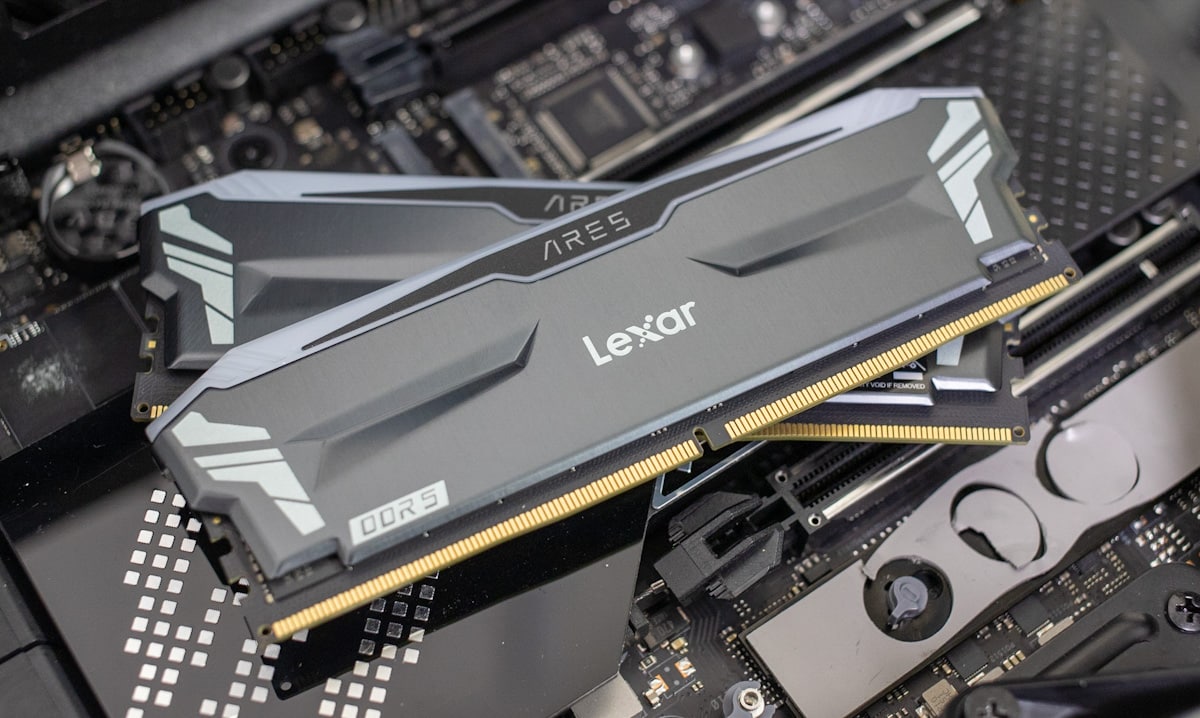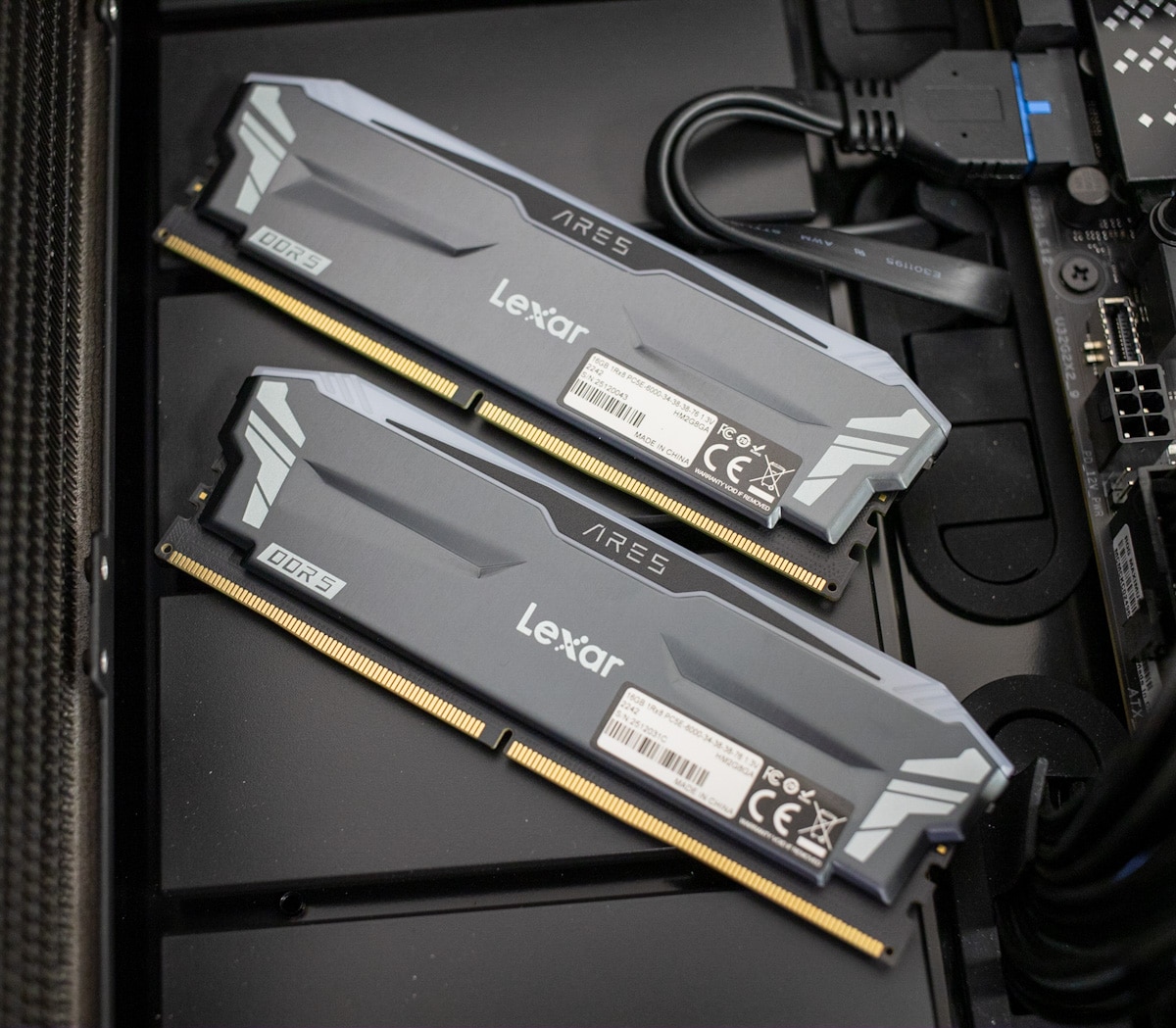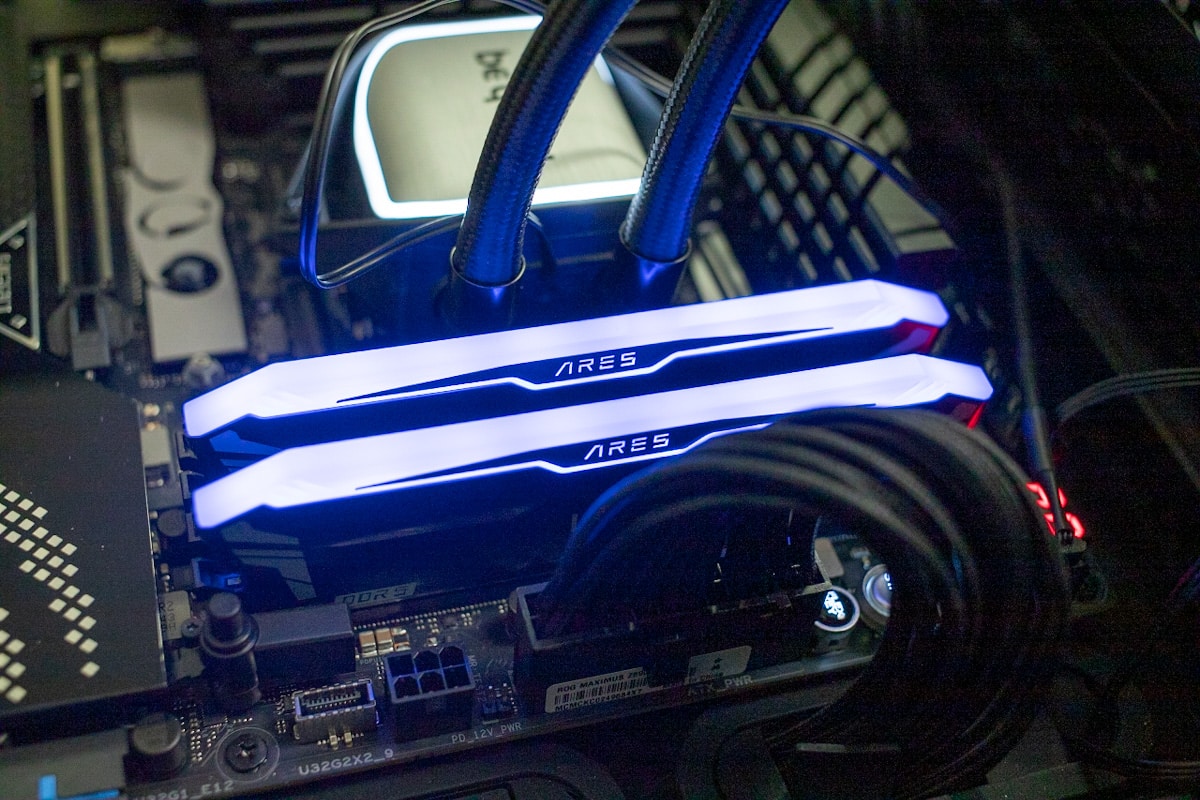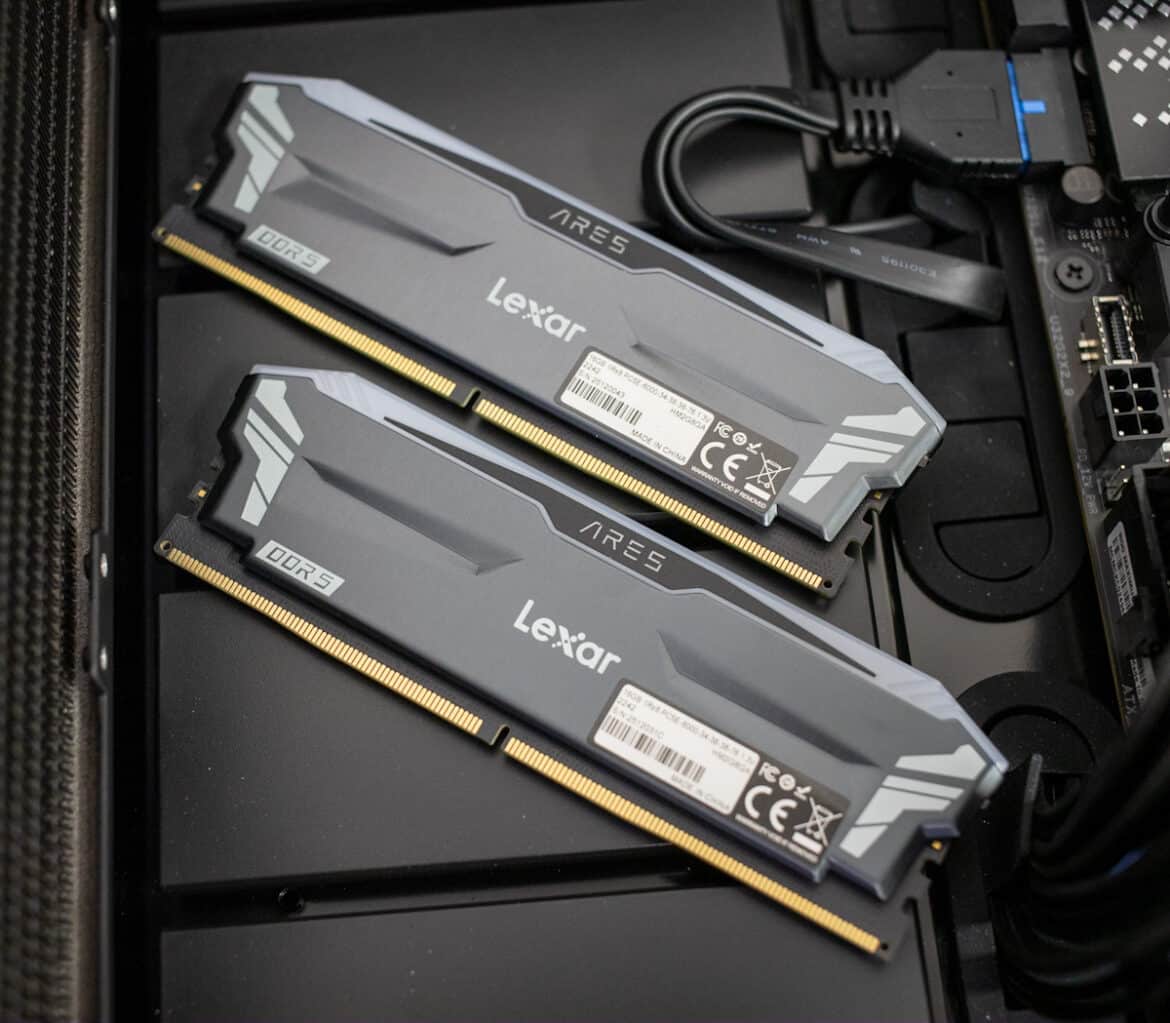Lexar is known for its memory cards but it also makes desktop memory kits, like the Lexar ARES RGB DDR5-6000 kit we’re reviewing here. This highly-clocked RAM has Intel XMP 3.0 and AMD EXPO compatibility and RGB heatsinks.
Lexar is known for its memory cards but it also makes desktop memory kits, like its ARES RGB DDR5-6000 kit we’re reviewing here. This highly-clocked RAM has Intel XMP 3.0 and AMD EXPO compatibility and RGB heatsinks.

Lexar ARES RGB DDR5 Specifications
Lexar’s ARES RGB DDR5 high-performance desktop memory comes in 5,200MHz, 5,600MHz, and 6,000MHz frequencies. In addition to being higher-clocked than Lexar’s normal DDR5 RAM, the ARES line also features RGB-lit aluminum heatsinks for aggressive looks. Lexar backs the memory with a lifetime warranty.
This ARES memory is one of several new kits we’ve seen that supports both Intel XMP 3.0 and AMD EXPO memory settings; Crucial’s second-generation DDR5 memory also supports both.
The Lexar ARES DDR5 desktop memory has the following technical specifications:
| Model | ARES RGB DDR5 |
| Capacity | 32GB Kit (2x 16GB) |
| Memory Type | DDR5 |
| Interface | 288-pin |
| Standard | XMP 3.0 and EXPO |
| Speed | 5,600MHz/6,000MHz (XMP 3.0 and EXPO) |
| CAS Latency | CL32-36-36-68/CL-34-38-38-76 (XMP 3.0 and EXPO) |
| Voltage | 1.2V/1.3V (XMP 3.0 and EXPO) |
| Operating Temperature | 0 to 85 degrees C |
| Storage Temperature | -55 to 100 degrees C |
| Module Size | L140 x W43.3 x H7.9mm (with heat spreader) |
| Application | PC Enthusiasts and Gamers |
Lexar ARES RGB DDR5 Design
Lexar gets points for making the ARES RGB DDR5 look modern and aggressive. The aluminum heat spreaders are finished in a classy dark gray and are topped with multi-zone RGB lights.

The heat spreaders also serve a functional purpose, of course, of keeping the memory cool under an extended load.

Lexar ARES RGB DDR5 Performance
We use our self-built StorageReview desktop to test DDR5 memory. It has the following specifications:
- Intel Core i9-12900K CPU (slightly undervolted)
- Asus ROG Strix Z690-E Gaming WiFi motherboard
- Microsoft Windows 11
- Seagate FireCuda 530 2TB SSD
Our Lexar ARES RGB DDR5 test kit is 32GB (2x 16GB) running at 6,000MHz. We are testing it at the kit’s XMP II profile settings, with CL34-38-38-64 timings. This kit goes for $149 on Amazon. That’s on the high side, as Corsair’s Vengeance RGB DDR5-6000 was going for $115 on sale.
For performance comparison, we’re using 32GB kits (2x 16GB) of Corsair Vengeance RGB DDR5-6000 and Crucial DDR5-5600 (second generation).
- Crucial DDR5-5600: CL46-45-45-67
- Corsair Vengeance RGB DDR5-6000: CL36-36-36-65
SiSoftware Sandra 2021
We start with the popular SiSoftware Sandra 2021 suite. Higher numbers are better in all subtests. The Lexar ARES kit didn’t quite match the Corsiar kit in any area, so the Corsair’s overall memory score is higher.
| Lexar ARES RGB DDR5-6000 (XMP II) | Corsair Vengeance RGB DDR5-6000 (XMP II) | Crucial DDR5-5600 (XMP II) | |
| Memory Bandwidth | 64.301GB/s | 70.944GB/s | 60.556GB/s |
| Cache & Memory Latency | 30.7ns | 29.7ns | 33.4ns |
| Cache & Memory Bandwidth | 523.054GB/s | 528.175GB/s | 511.247GB/s |
| Overall Memory Score | 2.60kPT | 2.73kPT | 2.46kPT |
7-Zip Compression Benchmark
The excellent 7-Zip file archive tool has a handy built-in compression benchmark. We ran 10 passes using a 128MB dictionary size and all 24 CPU threads of our Core i9-12900K; higher numbers are better.
The Lexar kit gets much closer to the Corsair kit in these tests, showing itself to be an almost even match. This should be expected since the kits run at the same frequency, and the timings aren’t drastically different.
| Lexar ARES RGB DDR5-6000 (XMP II) | Corsair Vengeance RGB DDR5-6000 (XMP II) | Crucial DDR5-5600 (XMP II) | |
| Compressing | |||
| Current CPU Usage | 1304% | 2127% | 1186% |
| Current Rating/Usage | 8.334 GIPS | 5.319 GIPS | 8.286 GIPS |
| Current Rating | 108.706 GIPS | 113.115 GIPS | 98.296 GIPS |
| Resulting CPU Usage | 1255% | 2120% | 1197% |
| Resulting Rating/Usage | 8.703 GIPS | 5.349 GIPS | 8.180 GIPS |
| Resulting Rating | 109.214 GIPS | 113.415 GIPS | 97.850 GIPS |
| Decompressing | |||
| Current CPU Usage | 2280% | 2298% | 2259% |
| Current Rating/Usage | 5.960 GIPS | 5.910 GIPS | 5.937 GIPS |
| Current Rating | 135.877 GIPS | 135.802 GIPS | 134.103 GIPS |
| Resulting CPU Usage | 2262% | 2304% | 2289% |
| Resulting Rating/Usage | 6.015 GIPS | 5.912 GIPS | 5.829 GIPS |
| Resulting Rating | 136.060 GIPS | 136.216 GIPS | 133.410 GIPS |
| Total Ratings | |||
| Total CPU Usage | 1759% | 2212% | 1743% |
| Total Rating/Usage | 7.359 GIPS | 5.630 GIPS | 7.004 GIPS |
| Total Rating | 122.637 GIPS | 124.816 GIPS | 115.630 GIPS |
Conclusion
Lexar’s ARES RGB DDR5 performed predictably well in our testing. Its availability in high frequencies up to 6,000MHz enhance its appeal, as do its RGB-infused aluminum heatsinks.
We also like that it supports both Intel XMP and AMD EXPO profiles, though this might explain why it’s priced a little higher than the competition. Nonetheless, it gives you the flexibility to switch platforms. Lexar ARES RGB DDR5 gets our general recommendation.
Engage with StorageReview
Newsletter | YouTube | Podcast iTunes/Spotify | Instagram | Twitter | TikTok | RSS Feed

